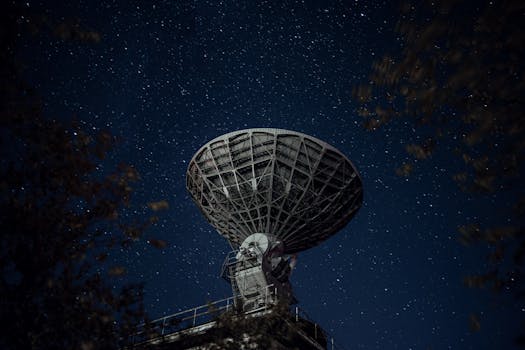
Starlink: The Revolutionary Satellite Constellation by SpaceX
Starlink is a satellite constellation developed by SpaceX to provide high-speed, low-latency internet connectivity around the world. The project was announced in 2015, and since then, SpaceX has launched numerous satellites into orbit, with the goal of creating a network of thousands of satellites that can provide internet access to remote and underserved areas.
At the beginning of the Starlink project, SpaceX faced significant challenges, including the development of a new type of satellite that could be mass-produced and launched at a low cost. The company also had to overcome regulatory hurdles and develop a system for managing the large number of satellites in the constellation. Despite these challenges, SpaceX has made rapid progress, and the Starlink constellation is now one of the largest in the world.
How Starlink Works

Starlink uses a constellation of low-Earth orbit satellites to provide internet connectivity. Each satellite is equipped with a high-gain antenna that communicates with user terminals on the ground. The user terminals are small, compact devices that can be easily installed at homes, businesses, or other locations. The satellites in the Starlink constellation are connected to each other through a network of inter-satellite links, which allows them to communicate with each other and with the ground stations.
The Starlink system uses a technology called beamforming to focus the signal from the satellite onto a specific area, increasing the speed and reliability of the connection. This technology also allows multiple users to share the same satellite, increasing the overall capacity of the system. The satellites in the Starlink constellation are also equipped with advanced propulsion systems, which allow them to maintain their position and altitude in orbit.
Benefits of Starlink

The Starlink satellite constellation has the potential to revolutionize the way we access the internet. By providing high-speed, low-latency connectivity to remote and underserved areas, Starlink can help to bridge the digital divide and bring the benefits of the internet to people around the world. The system can also be used to provide backup connectivity in areas where traditional internet services are unavailable or unreliable.
Starlink has numerous benefits, including its ability to provide internet access to areas where traditional infrastructure is limited or non-existent. This can be especially useful in rural or remote areas, where access to the internet can be limited. The system can also be used to provide connectivity in areas affected by natural disasters, such as hurricanes or earthquakes, where traditional infrastructure may be damaged or destroyed.
Future Developments and Challenges

Despite the rapid progress made by SpaceX, the Starlink project still faces significant challenges. One of the major challenges is the development of a system for managing the large number of satellites in the constellation. This includes developing advanced software and hardware systems for tracking and communicating with the satellites, as well as for managing the network of inter-satellite links.
Another challenge facing the Starlink project is the issue of space debris. With thousands of satellites in the constellation, there is a risk of collisions and the creation of space debris, which can pose a hazard to other satellites and spacecraft. To mitigate this risk, SpaceX is developing a system for de-orbiting the satellites at the end of their life, which will help to reduce the amount of space debris in orbit.
See more:





